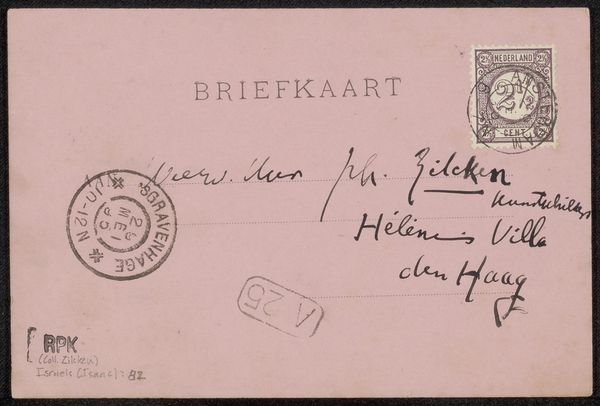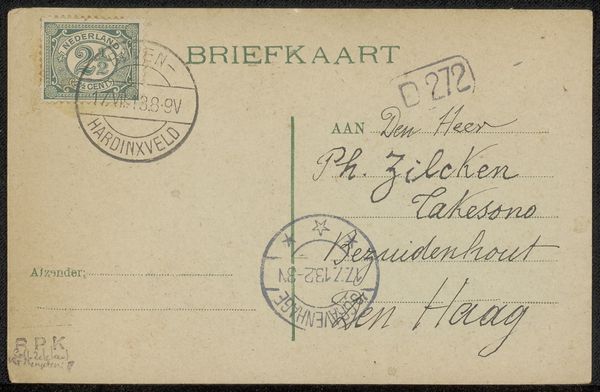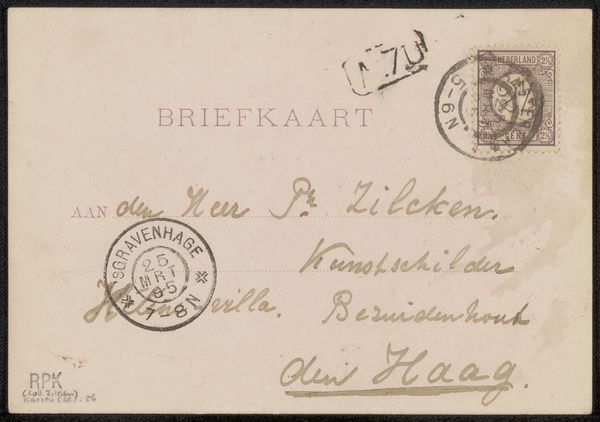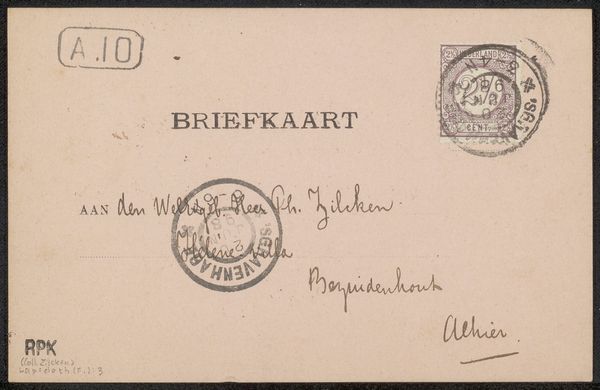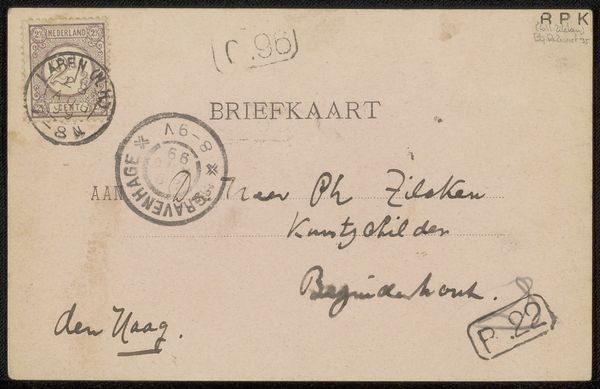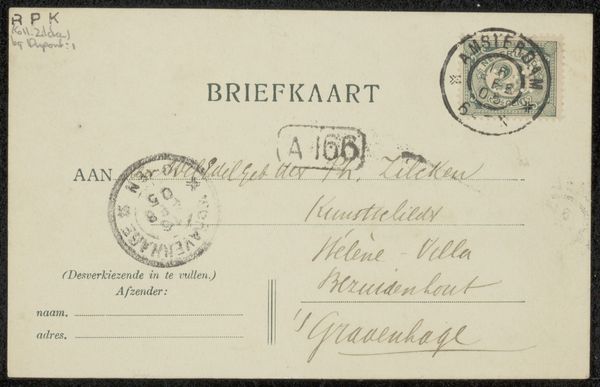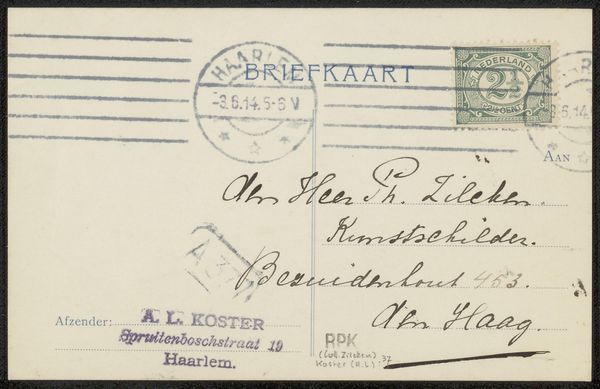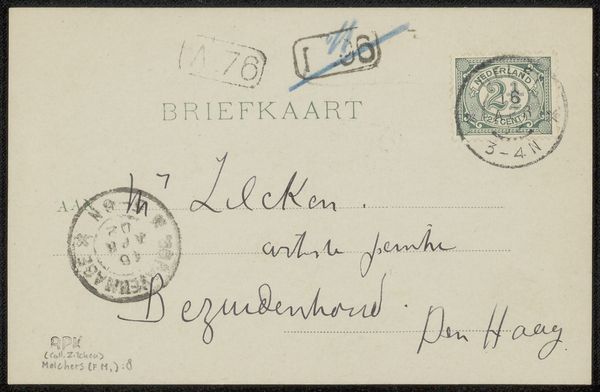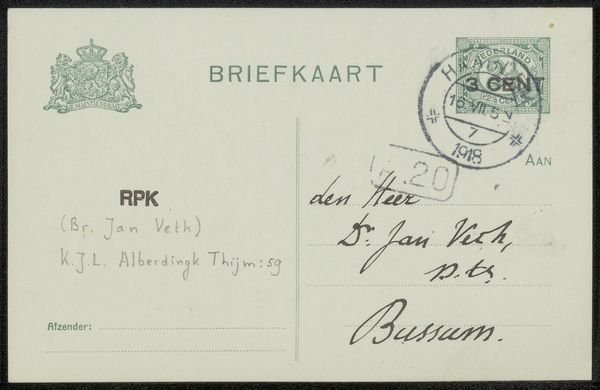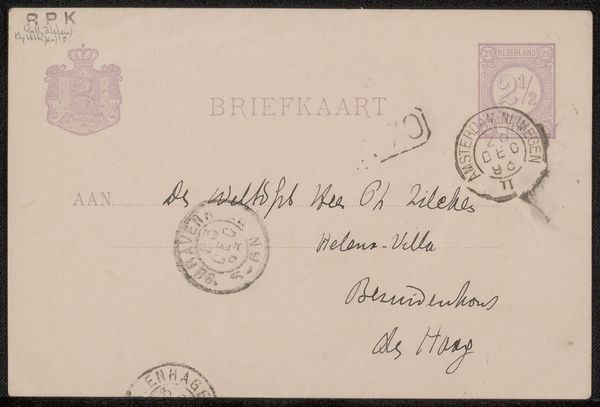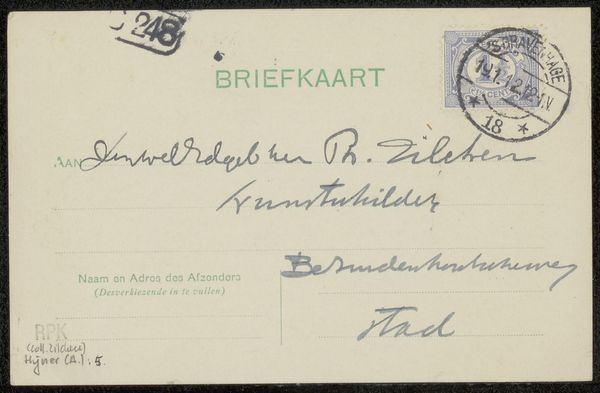
drawing, paper, ink, pen
#
drawing
#
comic strip sketch
#
hand drawn type
#
paper
#
personal sketchbook
#
ink
#
idea generation sketch
#
sketchwork
#
ink drawing experimentation
#
pen-ink sketch
#
sketchbook drawing
#
pen
#
storyboard and sketchbook work
#
sketchbook art
Copyright: Rijks Museum: Open Domain
Curator: This is Hendrikus Hubertus van Kol’s "Briefkaart aan Philip Zilcken," believed to have been made between 1910 and 1914. It’s ink on paper, a simple postcard really. Editor: Immediately, the script catches my eye—the varied weight of the inked lines speaks to the speed and intention of the hand that crafted it. There's a practical beauty here, divorced from painterly concerns. Curator: Exactly. The text becomes the primary focus. Van Kol uses the visual structure of a postcard as a means of direct communication; each stamp and handwritten flourish carries a coded significance. Editor: The very form, being a postcard, screams about the logistics of creation and distribution. This wasn't an artwork labored over in a studio; it's a readymade that's been customized with direct personal messages and stamps. I imagine the labor involved was as much about postal networks as artistic creation. Curator: Note the superimposition of marks; the stamps overlap and obscure certain areas of text. What we see here is an aesthetic borne of practical, rather accidental compositions. The eye jumps between defined shapes, seeking balance in its own way. Editor: Think about the material journey – from artist to postal worker, to recipient. This object's value exists through touch and social interactions with the postal service facilitating both the raw materials (the card itself), and its final arrival at the recipient, Philip Zilcken's doorstep. The very economy of this distribution process gives the artwork weight. Curator: Absolutely, the relationship between written and applied imagery creates meaning, an artistic decision of calculated output on Kol’s end. Editor: By analyzing these materials, and how they travel through a system of labor and infrastructure, we unlock all sorts of stories beyond the aesthetic surface. The mundane, everyday actions, and postal networks, transform this piece into so much more. Curator: Precisely. It's a testament to the power of artistic economy. The artist is simply composing; he presents to us pure expression, a clear representation through an intended, thoughtful exchange. Editor: It underscores how materials and circulation create contexts for deeper understanding.
Comments
No comments
Be the first to comment and join the conversation on the ultimate creative platform.
